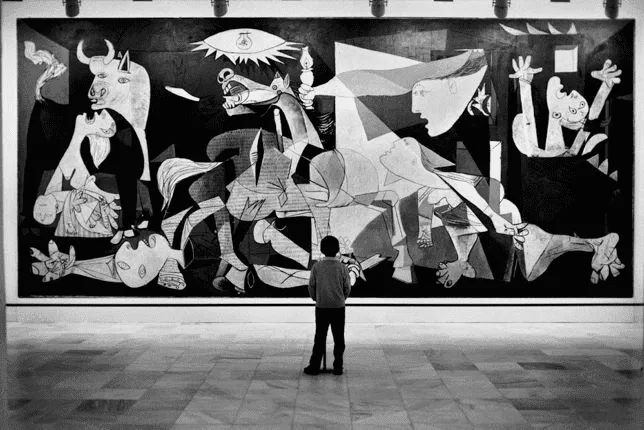This week, I was asked to speak at Sparks Talk, a regional event where speakers are challenged to do a concise, timed speech on a monthly topic. The topic for my keynote was risk, something I’m all too acquainted with. I started my business as a 40-year-old single father, with my oldest son starting college. Talk about a leap of faith.
The truth is, though, that it wasn’t that risky. My business wasn’t started the day I registered it — it was developing for over a decade as I built my expertise, published my blog, and established authority within my industry. In hindsight, it wasn’t dangerous at all. I’d prepared myself for my business for years, all while being compensated for working for other companies.
Action is the foundational key to all success.
Pablo Picasso
The fact is that there’s never a crossroad where we have to take a blind risk between success and failure. Risk is a dial that we have much more control over than we often imagine. And we can reduce risk by increasing the number of attempts at succeeding.
Picasso did this. His famous Guernica painting had 79 iterations before Picasso returned to his original sketches to complete the masterpiece. In his lifetime, Pablo Picasso drew over 12,000 drawings, 2,800 ceramics, and 1,800 paintings. He didn’t reduce risk — he embraced risk by making so many attempts.

Look to any inspirational leader, and you’ll find similar origins. Adam Grant details many of them in his book, Originals:
- Nike: Phil Knight sold shoes out of the trunk of his car for three years while working as an accountant.
- Apple: Steve Wozniak worked at Hewlett-Packard for a year while working at Apple until investors had him leave.
- Google: Larry Page and Sergey Brin stayed at Stanford for two more years after inventing their search engine in 1996.
- Queen: Brian May remained in his astrophysics doctoral studies for several years before leaving to be a musician full-time.
- John Legend: Legend continued to prepare PowerPoint presentations while he started touring.
- Dilbert: Scott Adams worked at Pacific Bell for seven more years after his comic strip was syndicated in newspapers.
If you watch Shark Tank or have ever talked to investors, you’ll often hear the opinion that a person has to go all in on a business or the idea if they hope to stand a chance of survival. The theory is that risk is the motivation to put forth the necessary effort to succeed. The approach is wrong.
Grant’s book details the findings that entrepreneurs who kept their day jobs had 33% lower odds of failure. Why? The security of having a job provided the entrepreneur with more freedom to test and optimize their business rather than less.
The lessons I’ve learned about risk and my business have been many over the last decade, but here’s a breakdown of things I’ve stopped doing:
- I stopped listening to people, including leaders, friends, and even family, who had never taken the journey I’m on. It’s like asking for directions from someone who has never been where I am; it doesn’t make sense.
- I stopped doing work that I wasn’t good at and outsourced it to people who were better and enjoyed it.
- I stopped thinking the customer always came first and was always right. My employees and partners come first; customers come and go. And some customers are just louder than others, pushing you down roads with bad decisions you must recover from when they’re gone.
- I stopped waking up and checking my email, and now I start each day by investing time and resources to improve my business.
- I stopped listening to the voices in my head that discouraged me from firing clients, requesting additional budget, or that trusted online gurus. I validate my optimism with data, and I often find that my intuition was wrong: Getting rid of bad clients is a relief — my clients do pay more for the services, and the online gurus are often just trying to sell their next speech or book.
This year is looking like it will be the best year in the history of my consultancy. I’ve reignited some side-projects that I’m passionate about and can invest more time and energy into now that my business is flourishing. And I did it all by taking action and embracing risk rather than avoiding it.